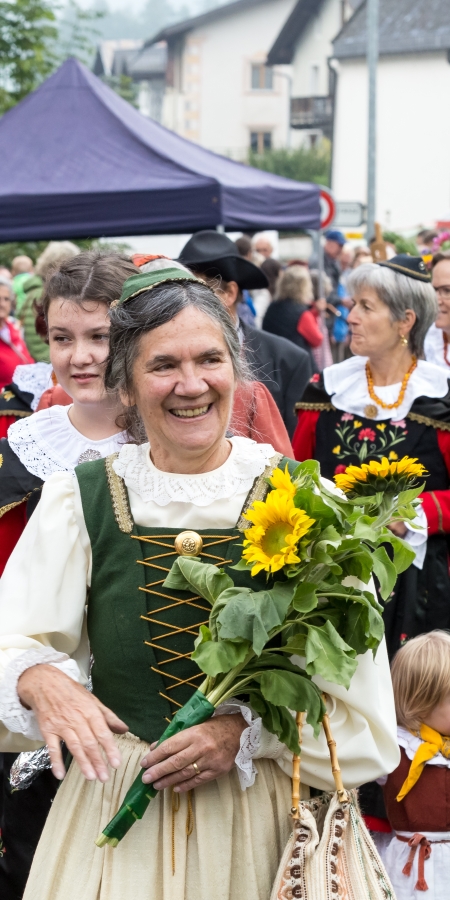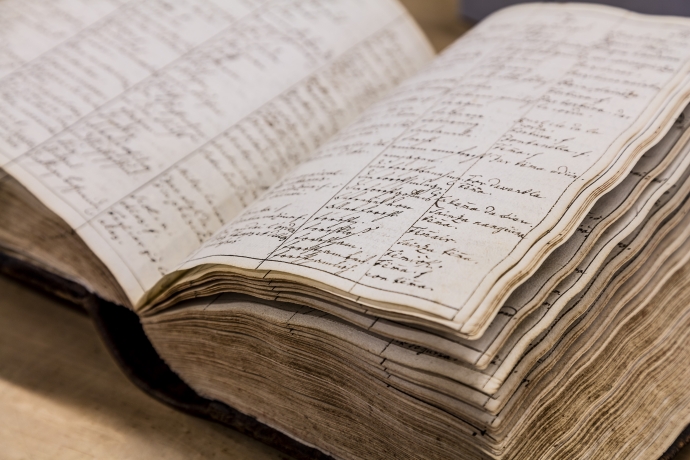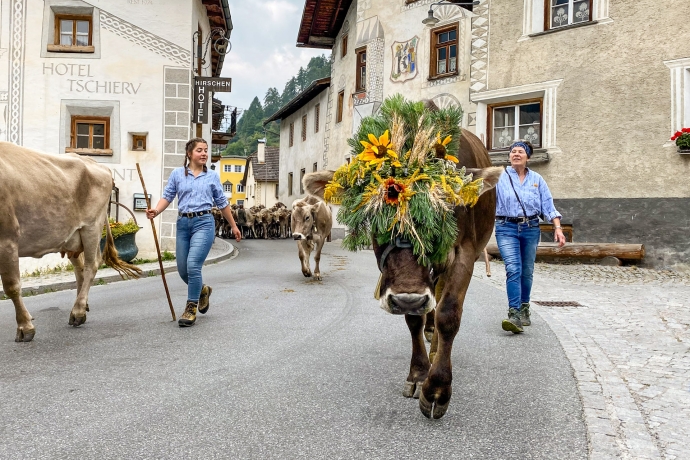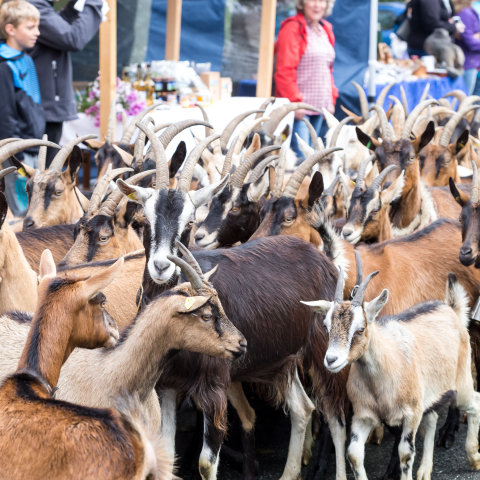Cultura jaura
Language & Tradition

Rumantsch
Around 15 BC, the Romans conquered the area between the Rhaetian Alps and the Danube and founded the province of Rhaetia. The vernacular Latin of the Roman soldiers, officials and merchants merged with the local languages and gradually developed into Romansh as we know it today. This is divided into five regional variants, also called idioms. In Val Müstair and the Lower Engadin, the idiom «Vallader» is widespread. The people of Val Müstair speak the dialect «Jauer» and thus lend the language their own touch.
Stai si defenda, Romontsch, tiu vegl lungatg!
Giacun Hasper Muoth Author
This was the unequivocal call of the writer Giacun Hasper Muoth (1844-1906) from Brigels to take greater care of the Romansh language. The background to this was the increasingly strong influence of the German language towards the end of the 19th century. The Biosfera Val Müstair is also committed to preserving Romansh as the main language of the valley. As many publications as possible aimed at the population are published in «Vallader». There is a lively exchange with the Lia Rumantscha, the umbrella organisation of Romansh language associations, and the annual intensive Romansh courses in Sta. Maria are supported.

Far reviver il passà
Contemporary witnesses
The «Oral History» project records individual impressions of life and events from the interviewees' childhood to the present day.
S-chargiada d'Alp
The alpine procession has been celebrated in Val Müstair for centuries. The animals, equipped with bells and decorated with wreaths of flowers, literally «ring in» the autumn. From their summer residence – the lush alpine meadows at lofty heights - the animals are led back to their winter quarters. But not without first making a lap of honour through Müstair, where the animals and shepherds are already awaited by the people of Müstair and celebrated together.
Chalandamarz
When the people of Val Müstair have had enough of winter, the boys and girls fetch cowbells of various sizes and Geissen bells from the stable. Then they go from house to house singing, ringing bells and cracking whips to put an end to winter. While the custom originally celebrated the turn of the year, today it heralds the arrival of spring and thus the end of the dark, cold season. The custom is now so well known that the school youth have even been allowed to perform it in front of the Bundehaus in Bern.
Festa da la racolta
Some local events have in the meantime achieved national fame – including the «Festa da la racolta», the traditional harvest festival in Valchava. The festival always takes place at the beginning of October and has always been a popular destination for the whole family. It starts with an ecumenical church service, followed by a colourful parade and a market. Regional products are offered at many stalls. The many small and large food stands provide culinary delights for the physical well-being.






